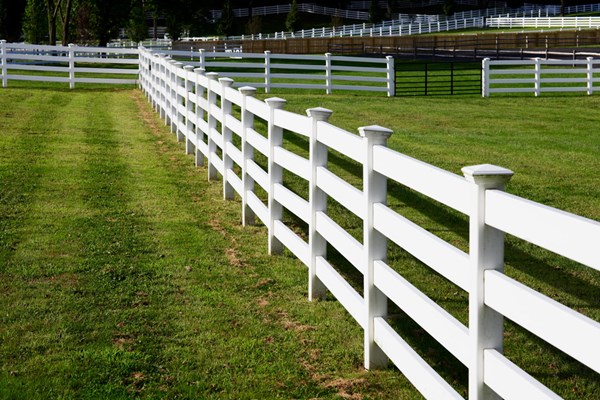 Credit: Thinkstock
Credit: ThinkstockFencing can be one of the most attractive–or unattractive–features of a horse facility. But beyond aesthetics, and most importantly, it has to be safe and suitable for horses.
The information below shared by Debbie Disbrow, president of Ramm Stalls and Fences, provides a comparison of a fencing types; costs are estimations only.
Keep in mind that a professionally installed fence might be more costly up-front than building a fence yourself, but the professionals might include a warranty or guarantee that won’t be available if you build the fence yourself.
Wood
Options: Three or four rails. Treated, untreated or plastic coated.
Pros: Aesthetically appealing.
Cons: Paint increases cost. Rails can warp or splinter. Horses may chew or damage the rails. A hot wire is inside the fence or along the top rail discourages horses from leaning or chewing.
High-Tensile Wire
Options: Five strand coated wire. Trademarked products such as Ramm Flex molecularly bond wire to polyethylene plastic.
Pros: Continuous run rails require fewer posts, less labor and bracing. In Flex-Fence, high-tensile wire is bonded to polyethylene plastic allowing it to flex up to six inches without shattering. High-tensile wire fences range from four rails to a five strand, coated wire.
Cons: Mid to higher price point.
Electric
Options: Galvanized or plastic coated. Plastic coated wire, rope/braided strand or electric tape.
Pros: Inexpensive, readily available, easy to install and use.
Cons: Higher maintenance. Fence lines should be kept free of tree branches or brush. UV coating prolongs electric tape.
Wire Mesh
Options: Diamond or “v” shaped. Non-climbable squares 2’x4’.
Pros: Less expensivefor large pastures than wood plank.
Cons: Expensive to maintain. Once the fence is damaged, it remains bent and can rust and develop sharp edges.
PVC/Vinyl Rails
Options: Three or four rails.
Pros: Eye-appeal, safety, easy maintenance.
Cons: Shatters if a horse pushes against it. An electric wire inside or along the top rail deters horses from pushing against the rails.
Steel
Options: Tubing/pipe (panels).
Pros: Steel pipe panels can be easily moved to clean or reconfigure paddocks.
Cons: Pipe rusts. Steel tubing/pipe can be unforgiving.
Cost and availability of many of these fencing options will depend on your geographic location; some areas have more wood plank fences, while in other areas steel fencing is readily available (usually due to proximity to oil fields). If you are paying someone else to install the fencing, the most popular fence types in your area will probably offer more options for installation.
The type of horses, lay of the land and future use of the property are important factors to consider when choosing a fencing type. Older horses experienced with high-tensile or electric boundary fences are not the same as young, inexperienced horses housed in these fence types.


